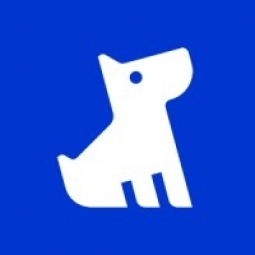Download PDF
Leveraging IoT for Efficient Management in the Trades Business: A Case Study of KVA Group
Technology Category
- Sensors - Electrical Conductivity Sensors
- Sensors - Level Sensors
Applicable Industries
- Electrical Grids
- Electronics
Use Cases
- Inventory Management
- Time Sensitive Networking
Services
- System Integration
The Challenge
The KVA Group, a Queensland-based electrical company, experienced a significant increase in workload due to the boom in home renovation work in Australia and New Zealand. This surge was a result of the COVID-19 travel bans, which led to an increase in home improvement and renovation jobs. The company, which specializes in residential electrical work, commercial shop fit-outs, air conditioning, and solar collection system installations, saw a 65% jump in home security and automation jobs in just eight months. This increase in workload necessitated the hiring of six new employees and the acquisition of two extra vehicles. The company's co-directors had to redefine their roles to manage the increased demand effectively. However, the traditional methods of job management were proving inefficient and time-consuming, leading to minor jobs falling through the cracks.
About The Customer
KVA Group is a Queensland-based electrical company that was founded in 2015 by Ben Davis and Elliott Furlong. The company specializes in residential electrical work, commercial shop fit-outs, air conditioning, and solar collection system installations. They have experienced a significant increase in their workload due to a boom in home renovation work in Australia and New Zealand, driven by COVID-19 travel bans. The company has had to hire additional staff and redefine roles to manage this increased demand. They are currently focusing on growth management, aiming to maintain a level of business that allows them to service their customers personally while keeping all staff members busy.
The Solution
To manage the increased workload and ensure efficiency, KVA Group implemented Fergus, a cloud-based team management software. This software allowed for effective delegation, scheduling of jobs for staff, and seamless operation regardless of location. The company's bookkeeper also started using Fergus, which provided all necessary information within the system, eliminating the need to consult the co-directors. This solution also eased the previously burdensome task of payroll management. Furthermore, KVA Group integrated the system with their wholesalers, including Lawrence & Hanson and Haymans, ensuring that the suppliers’ CSV price books were always accessible to everyone in the team. This integration provided more clarity and transparency, making everyone's work easier and ensuring that no jobs slipped through the cracks.
Operational Impact
Quantitative Benefit
Related Case Studies.

Case Study
Remote Temperature Monitoring of Perishable Goods Saves Money
RMONI was facing temperature monitoring challenges in a cold chain business. A cold chain must be established and maintained to ensure goods have been properly refrigerated during every step of the process, making temperature monitoring a critical business function. Manual registration practice can be very costly, labor intensive and prone to mistakes.

Case Study
Hydro One Leads the Way In Smart Meter Development
In 2010, Ontario’s energy board mandated that time-of-use (TOU) pricing for consumers be available for all consumers on a regulated price plan. To meet this requirement, Hydro One needed to quickly deploy a smart meter and intelligent communications network solution to meet the provincial government’s requirement at a low cost. The network needed to cover Hydro One’s expansive service territory, which has a land mass twice the size of Texas, and its customers live in a mix of urban, rural, and remote areas, some places only accessible by air, rail, boat or snowmobile. Most importantly, the network needed to enable future enterprise-wide business efficiencies, modernization of distribution infrastructure and enhanced customer service. To meet these needs, Hydro One conceptualized an end-to-end solution leveraging open standards and Internet Protocols (IP) at all communication levels. The utility drew upon industry leaders like Trilliant to realize this vision.

Case Study
Selling more with Whirlpool
Whirlpool wanted to add connectivity to appliances and transform the company's relationship with customers. Traditionally, Whirlpool interaction with customers was limited to purchases made once every ten years. Connected washer and dryers provide exciting new features like remote management of start times and inter-machine communication.

Case Study
Cloud Solution for Energy Management Platform-Schneider Electric
Schneider Electric required a cloud solution for its energy management platform to manage high computational operations, which were essential for catering to client requirements. As the business involves storage and analysis of huge amounts of data, the company also needed a convenient and scalable storage solution to facilitate operations efficiently.







